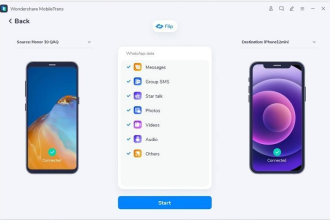In today’s digital age, faxing might seem outdated, but it plays a crucial role in many industries and businesses worldwide. Whether you’re a medical professional sending patient records, a legal firm transmitting confidential documents, or a small business owner needing secure communication, knowing how to send and receive faxes effectively is a valuable skill.
This comprehensive guide will walk you through the basics of faxing, from understanding the technology to troubleshooting common issues.
Understanding faxing technology
Faxing, short for facsimile, is a method of transmitting documents over telephone lines. It involves converting a physical document into electronic signals that can be sent over a phone line to a receiving fax machine. The receiving fax then converts these signals into a physical copy, providing a replica of the original document.
To send a fax, you’ll need a fax machine or a computer with fax software, a dedicated phone line, or an internet connection if you’re using an online fax service. It’s important to note that faxing operates on the Group 3 fax protocol, which determines how data is encoded and transmitted. This protocol ensures compatibility between different fax machines, regardless of the manufacturer.
Sending a fax
Sending a fax is a straightforward process, but following the steps carefully is essential to ensure successful transmission. Here’s a step-by-step guide:
Prepare the document: Start by placing the document you want to fax face down on the fax machine’s document feeder or scanner bed. Ensure that the record is clean and free of any obstructions.
Dial the recipient’s fax number: Use the fax machine’s keypad to dial the recipient’s fax number. If you’re using an online fax service, you’ll typically enter the recipient’s fax number in the provided interface.
Initiate the fax transmission: Press the “Send” or “Start” button on the fax machine to initiate the transmission. If you’re using a computer-based fax service, follow the on-screen prompts to send the fax.
Wait for confirmation: After sending the fax, wait for a confirmation page or notification indicating whether the transmission was successful or if there was an error.
Receiving a fax
Receiving a fax is even simpler than sending one. Your fax machine or online fax service will do most of the work. Here are the steps to receive a fax:
Ensure the fax machine is ready: Ensure your fax machine is turned on and properly connected to the phone line. If you use an online fax service, ensure a stable internet connection.
Wait for incoming fax signal: When someone sends a fax to your number, your fax machine will automatically detect the incoming signal and start receiving the document.
Retrieve and review the fax: Once the fax is accepted, it will be printed out (if you’re using a physical fax machine) or displayed digitally (using an online service). Please review the document to ensure it’s complete and legible.
Troubleshooting common faxing issues
While faxing is a reliable form of communication, like any technology, it can encounter occasional hiccups. Knowing how to troubleshoot common faxing issues can save you time and frustration. Here are some of the most prevalent problems and how to address them:
Poor line quality: One of the most frequent issues in faxing is poor quality. This can result in distorted or incomplete transmissions. First, ensure that all cables and connections are secure to address this. If the problem persists, consider using a dedicated fax line, or if you’re using an online fax service, check your internet connection. A fax modem with error correction capabilities can help mitigate line quality issues.
Paper jams or feeding problems: If you’re using a physical fax machine, paper jams or feeding problems can occur. Start by checking the document feeder or scanner bed for any obstructions. Make sure the paper is aligned correctly and not wrinkled. If jams persist, consult the manufacturer’s manual for specific troubleshooting steps. This issue is less common in online faxing, but it’s essential to ensure your digital documents are in a compatible format for smooth transmission.
Security considerations in faxing
Regarding faxing, security is a paramount concern, especially in industries where sensitive or confidential information is exchanged. While faxing over traditional phone lines is generally considered secure, there are additional steps you can take to enhance security:
Encryption: Consider using encryption technologies to secure your fax transmissions. This involves encoding the data so only authorized recipients can decode it. Some modern fax machines and online fax services offer encryption features for added security.
Fax cover sheets: Always use a cover sheet when sending sensitive information via fax. This sheet should include the recipient’s name, contact information, and a confidentiality notice. It acts as an added layer of protection and ensures the document reaches the intended recipient. It is also with looking into a free fax online service if you’re concerned about security.
All in all
While faxing may seem like a technology of the past, its importance in specific industries cannot be overstated. Knowing how to send and receive faxes efficiently can be a valuable skill that sets you apart in various professional settings. By understanding the technology, following the steps outlined in this guide, and troubleshooting any potential issues, you’ll be well-equipped to handle fax communication in any business environment. So, embrace this reliable form of communication and stay connected with colleagues, clients, and partners, regardless of the digital advancements around us.















